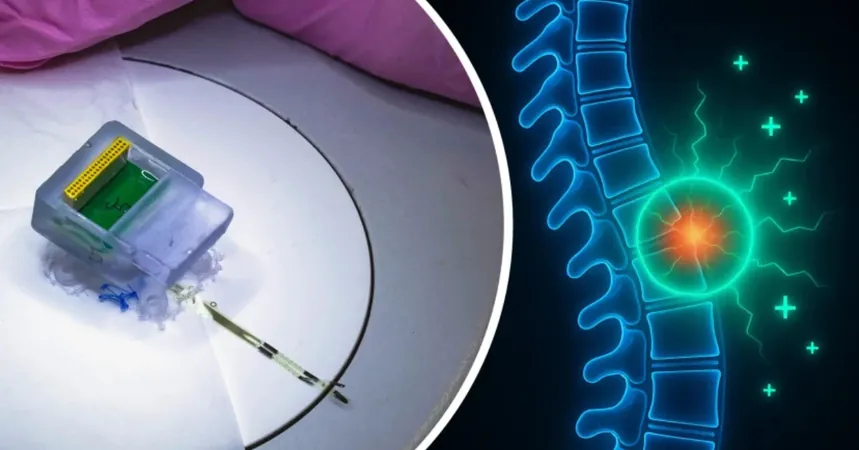
Revolutionary Bioelectric Implant Could Restore Movement After Spinal Cord Injury!
2025-07-01
Author: William
In a groundbreaking development, researchers from Chalmers University of Technology in Sweden and the University of Auckland in New Zealand have unveiled an innovative bioelectric implant that has successfully restored movement in rats with spinal cord injuries. This pioneering advance brings newfound hope for effective treatments for the 15 million people globally grappling with spinal cord injuries, a condition that can lead to devastating loss of function and sensation.
Spinal cord injuries occur when the intricate network of nerve fibers, responsible for transmitting signals between the brain and the body, is damaged. Unlike many other injuries, the spinal cord has a limited capacity for healing, often resulting in profound disabilities or paralysis. Maria Asplund, a leading bioelectronics professor at Chalmers, emphasizes the severity of these injuries, stating, 'Unlike a skin wound, which typically heals on its own, the spinal cord does not regenerate effectively.'
Harnessing Electricity for Recovery
In their study, recently published in Nature Communications, the researchers leverage the body's natural electric fields, which play a crucial role during early nervous system development. Bruce Harland, a senior research fellow at the University of Auckland, explains that they have developed an ultra-thin implant designed to rest directly on the spinal cord, positioned accurately over the injury site.
This innovative device delivers a precisely controlled electrical current across the damaged area, aiming to stimulate the healing process, enabling individuals to regain lost functionalities. As Svirskis highlights, 'Our goal is to help people recover from the severe impacts of spinal cord injuries.'
Promising Results from Animal Studies
The experiments demonstrated that the electrical field treatment significantly enhanced locomotion and sensory recovery in the injured rats. This discovery shines a light of hope for those suffering from similar injuries. Asplund mentions a long-term vision to transform this technology into a medical device that could radically change lives.
The research marks a pivotal advancement, being the first to utilize a thin implant that delivers direct stimulation to the spinal cord—a leap towards precision in spinal cord therapy.
A Safe and Effective Solution
Lukas Matter, a doctoral student at Chalmers, describes the study as 'an exciting proof of concept' that illustrates how electric field treatment can enhance recovery from spinal cord injuries. The research revealed that compared to those who did not receive stimulation, the rats that underwent daily treatment exhibited improved movement and quicker responses to touch after just four weeks.
Most reassuringly, the analysis confirmed that this innovative treatment did not induce inflammation or cause additional damage, showcasing its safety alongside its effectiveness.
What’s Next?
Looking forward, the next phase of research will delve into various treatment parameters—strength, frequency, and duration—to identify the optimal method for spinal cord repair. This breakthrough could pave the way for revolutionary treatments, turning the tide for millions affected by spinal cord injuries!









 Brasil (PT)
Brasil (PT)
 Canada (EN)
Canada (EN)
 Chile (ES)
Chile (ES)
 Česko (CS)
Česko (CS)
 대한민국 (KO)
대한민국 (KO)
 España (ES)
España (ES)
 France (FR)
France (FR)
 Hong Kong (EN)
Hong Kong (EN)
 Italia (IT)
Italia (IT)
 日本 (JA)
日本 (JA)
 Magyarország (HU)
Magyarország (HU)
 Norge (NO)
Norge (NO)
 Polska (PL)
Polska (PL)
 Schweiz (DE)
Schweiz (DE)
 Singapore (EN)
Singapore (EN)
 Sverige (SV)
Sverige (SV)
 Suomi (FI)
Suomi (FI)
 Türkiye (TR)
Türkiye (TR)
 الإمارات العربية المتحدة (AR)
الإمارات العربية المتحدة (AR)